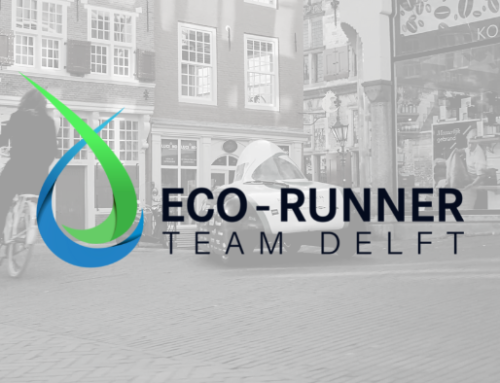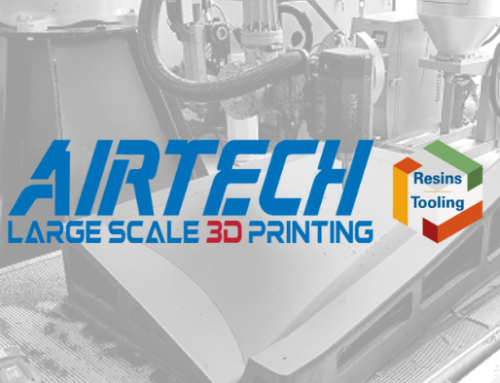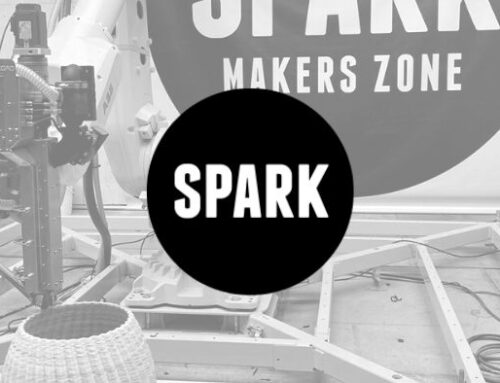Fully 3D printed monocoque for CO2 neutral car ZEM

About TU/ecomotive
This multidisciplinary student team is based at the Eindhoven University of Technology. Their goal is to shape the future of sustainable mobility by implementing the most recent innovations in concept cars.
The team of 2022 is presenting ZEM, which stands for Zero Emission Mobility. The goal of the seventh TU/ecomotive team was to reduce CO2 emissions during all life phases; production, driving, and after-life.

Photo credit: Bart Overbeeke
The challenge
In 2030, Europe should have reduced its CO2 emissions by 55% in comparison to 1990. In 2050, Europe should be the first climate-neutral continent. With TU/ecomotive, we give a great example of how it can also be done within the (automotive) industry, by showing the possibilities of how these sustainability goals can be achieved throughout every life phase of the vehicle.
Companies are adapting their products and manufacturing processes to tackle the critical issues that shape our lives and markets. One of these issues is the growing impact of climate change. To mitigate this problem, reducing the production of greenhouse gases, particularly carbon dioxide (CO2) is essential. This poses a challenge in the automotive industry as it requires significant limitations in material choices and restrictions in manufacturing methods. For this reason, the TU/ecomotive student team has taken on the challenge of building a concept car that is completely CO2-neutral.
The pilot project solution
“During the production phase, we decided to implement additive manufacturing, for printing the monocoque and body panels of our vehicle ZEM” says Jop van Aken, Project manager. By 3D-printing these parts of Zem, the exact required shape can be printed while virtually no waste material is produced. The circular plastics used to print this car can be shredded and reused for other projects, further advancing the goal of achieving CO2 neutrality.
“We were looking for new solutions for the production process of ZEM, and executing a pilot project with CEAD was a perfect match. Instead of using straight composite panels we used in our previous concept car Luca, we wanted to create the monocoque for this year’s vehicle. 3D printing allows us to create a less geometrically constrained monocoque, while it also increases the sustainability in the production process and the “End of Life” recycling process”, explains Max Crutzen, Exterior designer of ZEM.

The result
“To geometrically design a good monocoque chassis, there are a couple of things that need to be taken into consideration. To begin with, it is important to ascertain the features of the monocoque and how to leverage them to benefit the structure Secondly, it is important to define the amount of available space for the structure in the assembly packaging. Finally, it is crucial to identify which components of the chassis are structurally signficant in terms of load paths and forces.. Before starting the process, the structure was prepared to be symmetric along the ZY plane.
This means that only half of the model had to be modeled as it was mirrored at the end of the process. Due to the fact that different modeling techniques are used, the design process was divided into the monocoque tub and roof pillars”, explains Mateusz Michalski, Chief Mechanical of ZEM. “In the end, we were able to print the car exactly as we designed and desired it. This was again proof that with additive manufacturing, you can create anything you want, even cars!”, explains Rien Becker, Exterior of ZEM. We used rPETg, made from recycled cooking oils. We were able to print with this highly sustainable material like any other plastic could do. “Not having to create molds reduced the amounts of waste greatly, adding up to our sustainability”, explains Becker.
CEAD point of view:
Innovation and collaboration are two key factors that drive progress in the world of engineering. At CEAD, we believe that working with student teams is not only essential for exposing our machines and technologies to the future engineers of the world, but it also brings new and fresh ideas to the table. This year, we had the pleasure of collaborating with the TU/Ecomotive team and their ZEM project.
One of the biggest challenges we faced during the project was selecting the right material for the monocoque, which would be an essential structural part of the car. The material had to be strong enough to withstand the stresses endured during driving. The TU/Ecomotive Team performed a FEM analysis on the car, and based on the results, we initially chose SABIC’s LNP™ THERMOCOMP™ AM COMPOUND DC004XXAR1, a polycarbonate with 20% carbon fibers specially compounded for LFAM. We ran several trials and realized that an S25 extruder is more suitable for this tough polycarbonate material in combination with the required speed due to the large tool path length per layer. For this reason we offer several extruders in our portfolio, for different applications and material requirements. Since we were printing with the E25, we decided to print with Mitsubishi Chemical Europe’s Carbon-P, a recycled PETG with carbon fibers that still provided the required strength while keeping circularity in mind.

The design of the monocoque also evolved significantly throughout the project. We were able to design the entire monocoque with LFAM in mind, which helped us avoid design limitations such as excessive layer overhang. This reduced the risk of production failures significantly, and we only had to run a few trials before starting the production of the final print.
In summary, our collaboration with the TU/ecomotive team was a success. It allowed us to showcase our machines and technologies to the future engineers of the world, and it brought fresh applications to the table that we may not have considered otherwise. The selection of the right material and design considerations were key factors in producing a successful final print of the monocoque. We look forward to future collaborations with the TU/Ecomotive team and continuing to push the boundaries of our LFAM solutions.




